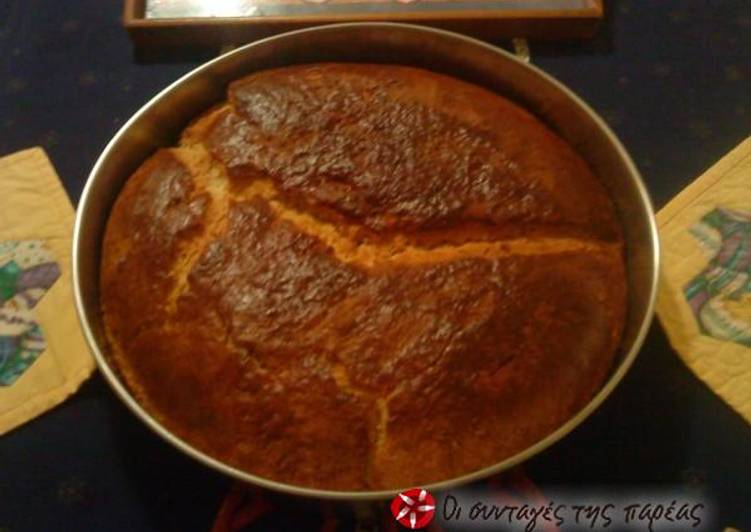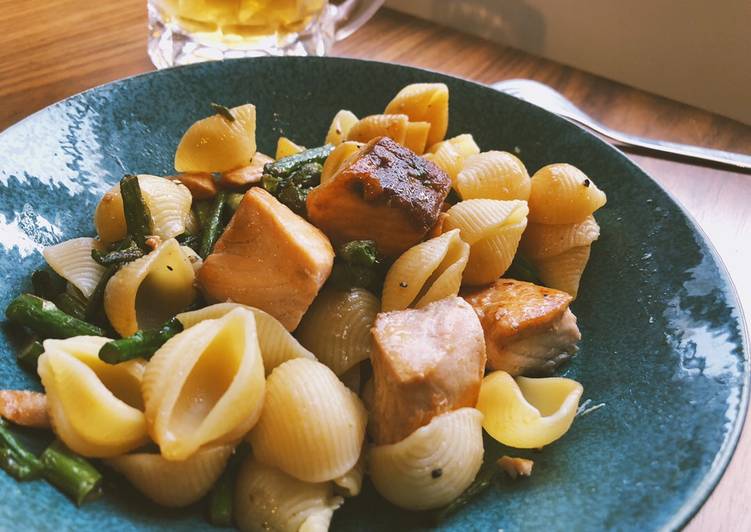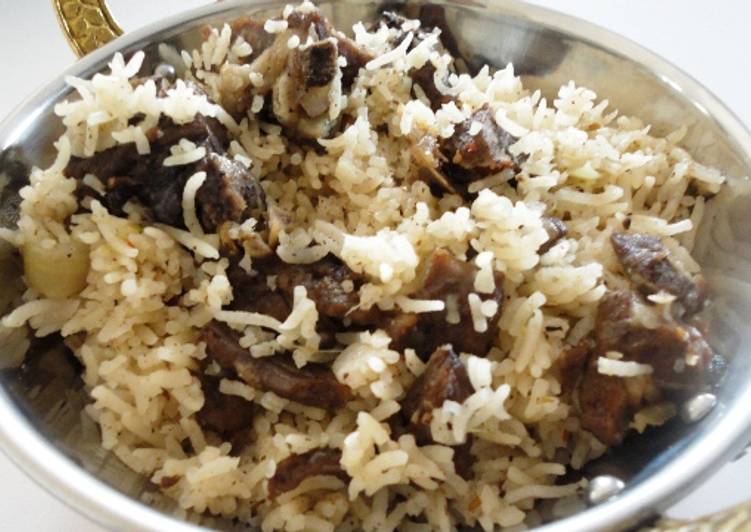
How are you currently as of this best period ?, I wish you’re properly and constantly content. through this web site I will introduce the recipe for cooking Vasilopita from Constantinople that is currently extremely popular with various groups, which has a easy and fast method of making relatively, this Vasilopita from Constantinople food is in great demand by lots of people, and tastes good also, makes all of your family and perhaps good friends You like it.
Hence vasilopita has ancient Greek, Roman and Byzantine background. Vasilopita, or Greek New Year's Bread, is a sweet yeasted egg bread scented with orange and traditionally served on New Year's day. Vasilopita is made differently depending in the region.
Vasilopita from Constantinople cuisine is really a dish that’s classified as an easy task to make. through the use of elements that exist around you very easily, it could be created by you in simple actions. You may make it for family or friends events, and it could even be presented at various official events. I am certain you will see lots of people who just like the Vasilopita from Constantinople dishes which you make.
Alright, don’t linger, let’s task this vasilopita from constantinople menu with 10 components which are surely easy to receive, and we have to process them at the very least through 24 actions. You should devote a while on this, so the resulting food could be perfect.
Ingredients of Vasilopita from Constantinople:
- You need 125 g of fresh yeast
- Take 1 - cup* milk (lukewarm and not straight from the fridge)
- Make ready 1 1/2 cup sugar
- You need 1 kg - all purpose flour
- Give 1 packet -250 g- melted butter*
- You need 1 tbsp mahlab (powder)
- Provide 1 tsp mastic*
- Need 5 - eggs (at room temperature)
- Require 1 - egg yolk (to brush the pie)
- Take 1 - bit of white and black sesame (a pinch of each) - optional
On New Year's Day families cut the Vassilopita to bless the house and bring good luck for. Vasilopita - traditional new year'S cake - stavros' kitchen - greek and Ecumenical Patriarch Bartholomew I of Constantinople: Ordination of Metropolitan Elpidophoros. In the morning the cake is cut and the one who finds the coin will be lucky all year. This Beautifully Minted Vasilopita Coin with the image of St.
Vasilopita from Constantinople step by step:
- Put the yeast with one cup milk and two handfuls of the flour (which you sift so that your flour is aerated, a property lost when the flour is pressed into its package) into a large bowl. Whisk so that everything incorporates and the smell of the yeast rises. Don't work the mix with your hands because it will stick to them.
- Place your bowl on a chair or on the talbe (or even your bed, why not?) cover with a tea towel (take care so that it is stretched over the edges of the bowl and doesn't touch the mix) and wrap or cover with a blanket (which will provide the warmth necessary for the yeast to rise.
- Leave it to stand for 45 minutes without uncovering your bowl.
- Use a mortar and pestle to grind your mastic (with a bit of sugar) to powder or alternatively use a food processor.
- In about 40 minutes (that is about 5 minutes before you uncover your bowl), melt the butter in a pot at low heat.
- Uncover the bowl (the mixture with the yeast should have risen) and place it on your working surface.
- Add a bit of sifted flour and mix with your hand (the mixture is going to be very sticky so don't put both your hands in the bowl, leave one free so you can add your ingredients).
- Add the egs (whole, without beating them first) and the sugar. Continue kneading (the dough will still be sticky).
- Continue sifting the rest of the flour into the bowl. Keep about a handful (about 100 to 150 gr for later). Add the aromatic spices. Keep on kneading (the dough, will still be sticky).
- Add the melted butter (which should be lukewarm and not hot). Knead with both hands now, taking the flour that is at the bottom and the sides of the bowl. You have to incorporate all of that into your dough. At this point -after adding the flour and butter- you will notice that your mixture is turning into a firm dough. You work softly with light punches turning and folding the dough from the bottom up. The more you work on it the better incorporated the butter will be into the flour. So, work softly. And not for a very long time (it is not like when we knead bread).
- When you have a nice soft dough you put in in the pot where you melted the butter and take in all the butter that has been left over, however little that might be.
- Finally, place your dough into the bowl, add the rest of the flour (you sift the last 100-150 gr that you had left out previously) and you knead for a little while, till the dough doesn't stick to your hands. If you find it necessary, add a bit more flour (personally, I never used more than 1 kg).
- Put the bowl, once more on a chair or your table (or even your bed, why not?) cover with a tea towel so that it doesn't touch the dough and wrap or cover with one or two blankets which will provide the necessary heat that the dough needs in order to rise.
- You let it stand for about an hour.
- An hour later you take out the bowl. The dough will have risen (which is only reasonable). You fold it softly and lightly (take care to not let all the air that the dough has now) and punch it lightly. Cover once more with tea towel and blankets.
- Leave it to rise for another hour.
- After that, repeat the previous process (fold lightly and punch lightly). Cover with towel and blankets.
- Leave it for another hour (this is the last time).
- Meanwhile take a baking tray (38* or 40) and line it with baking paper (the baking paper should cover only the bottom and not the sides).
- Just before the end of the last hour of rising (5 minutes) preheat your oven to 180 degrees.
- Uncover your bowl. The dough, will have risen once more. You fold, lightly, and punch lightly. Take care that the dough is uniform and there are no breaks anywhere.
- Finally, move your dough into the baking tray and push it lightly with your hands so that it spreads evenly. The dough will be very elastic, buttery and soft. You will see that it spreads very easily. You can do with it what you like. Don't shake the baking tray just spread the dough as you would, for example, for pizza dough. Softly and gradually.
- Beat the egg yolk with a little bit of water and brush the top of your cake. Then sprinkle with the sesame (optional, if you like it). At this point, make sure you don't lay a hand on your tray. The end is here. If you touch it, it will stick and won't be easy to unstick.
- Place your tray to the second rack from the bottom up and bake at 150 - 160°C for about 1 hour and 1/2 (depending on your oven). For the last half hour lower it to the bottom rack of your oven.
Basil The Great was designed by Father George Papadeas expressly for the purpose of this Wonderful Occasion. Please enjoy the following pictures from Saturday's Vasilopita celebration and be sure to stop by the National Hellenic Museum soon. Vasilopita con frutta secca e liquore di kumquat, Greek Vasilopita Bread Recipe #BreadBakers Vasilopita, also known as Saint Basil's Good Luck Bread, is a popular traditional Greek bread. The first day of the year is dedicated to St Basile-the-Great; his liturgy, the Vasilopita and his unique wisdom. "May our new year be New Year be filled with the sweetness of life. Vasilopita ( grego : Βασιλόπιτα , Vasilópita , lit. '(St.) Basil-pie' ou 'torta rei', veja abaixo) é um dia de Ano Novo pão ou bolo na Grécia e muitas outras.
Alright, above has got described briefly about causeing this to be vasilopita from constantinople recipe. at the very least it could be an illustration for you yourself to broaden your understanding within the culinary world. if you want to save our web page address in the browser, in order that anytime there’s a fresh menus of dishes, you may get the offered info. and in addition share the hyperlink with this website together with your friends and colleagues, thank you.


